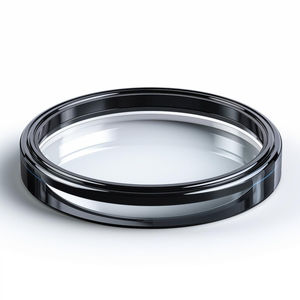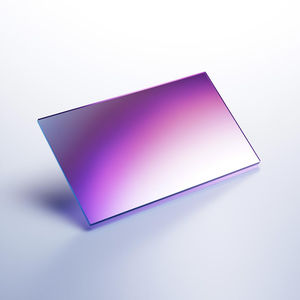
- Metrology - Laboratory
- Optical Component
- Waveplate
- Alien Photonics

- Products
- Catalogs
- News & Trends
- Exhibitions
Dual-wavelength waveplate
Add to favorites
Compare this product
Characteristics
- Options
- dual-wavelength
Description
Dual (Double) Wavelength Waveplates for Nd:YAG, Yb:YAG, Ti:Sapphire, other lasers and optical devices. Change the polarization of two distinct wavelengths.
Dual Wavelength Waveplates: function, construction and purpose.
What is the main function of dual wavelength waveplate?
Dual wavelength waveplates are optical components designed to manipulate the polarization state of light at two distinct wavelengths.
How Dual Wavelength Waveplates are produced and constructed?
Dual wavelength waveplate production and configuration is similar to low order waveplate. It is relatively thick (when comparing to true zero order) waveplate with specific retardation value plus (integer) number. By carefully designing the thickness of waveplate it is possible to align the phase shifts, so that waveplate has specific retardation values for two (or more wavelengths).
Custom Dual Wavelength Waveplates
Alien Photonics dual wavelength waveplates can be customized in size, wavelength, LIDT, retardation (quarter, half or full waveplates).
Ti:Sapphire Dual Wavelength Waveplate
Dual Wavelength Waveplate designed to act as a half-wave (λ/2) plate at 800 nm and a quarter-wave (λ/4) plate at 400 nm can rotate the polarization of light at 800 nm while converting linearly polarized light into circularly polarized light (or vice versa) at 400 nm.
Yb:YAG Dual Wavelength Waveplate
Dual wavelength waveplate designed to operate as a half-wave (λ/2) plate at 1030 nm and as a quarter-wave (λ/4) plate at 515 nm achieves dual-function polarization control by introducing a π phase shift for light at 1030 nm and a π/2 phase shift for light at 515 nm.
Related Searches
- Glass lens element
- Optical prism
- Spectrum lens element
- Optical window
- Optical lens element
- Glass optical prism
- Visible lens element
- Round mirror
- BK7 lens element
- Convex array lens element
- Laser lens element
- Crystal lens element
- Silica lens element
- Spherical lens element
- Round optical window
- UV lens element
- Fused silica lens element
- Laser mirror
- Plano-convex lens element
- Cylindrical lens element
*Prices are pre-tax. They exclude delivery charges and customs duties and do not include additional charges for installation or activation options. Prices are indicative only and may vary by country, with changes to the cost of raw materials and exchange rates.












